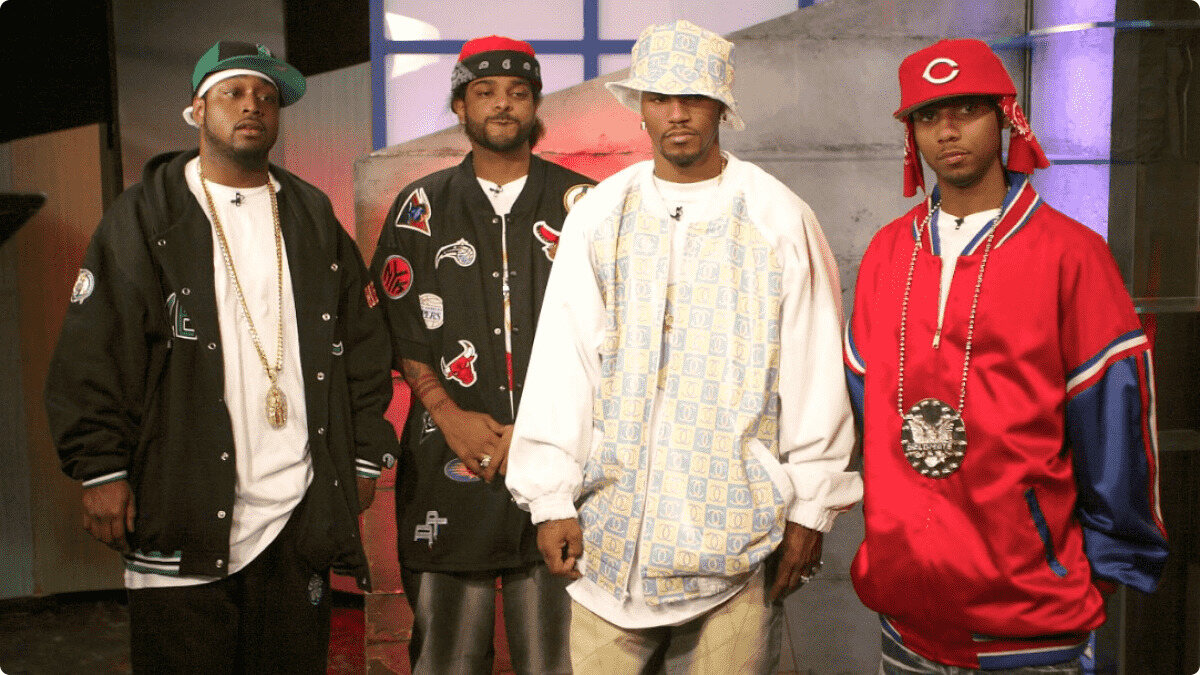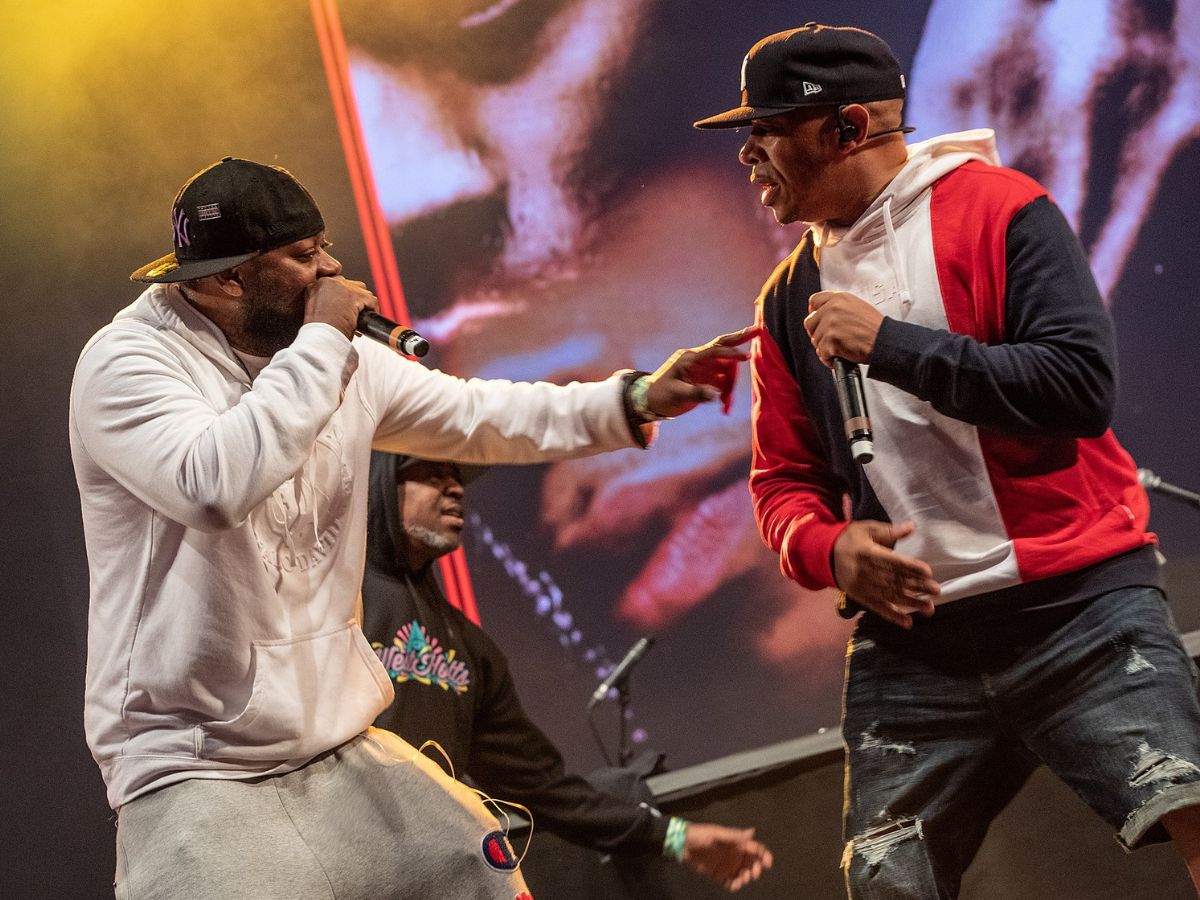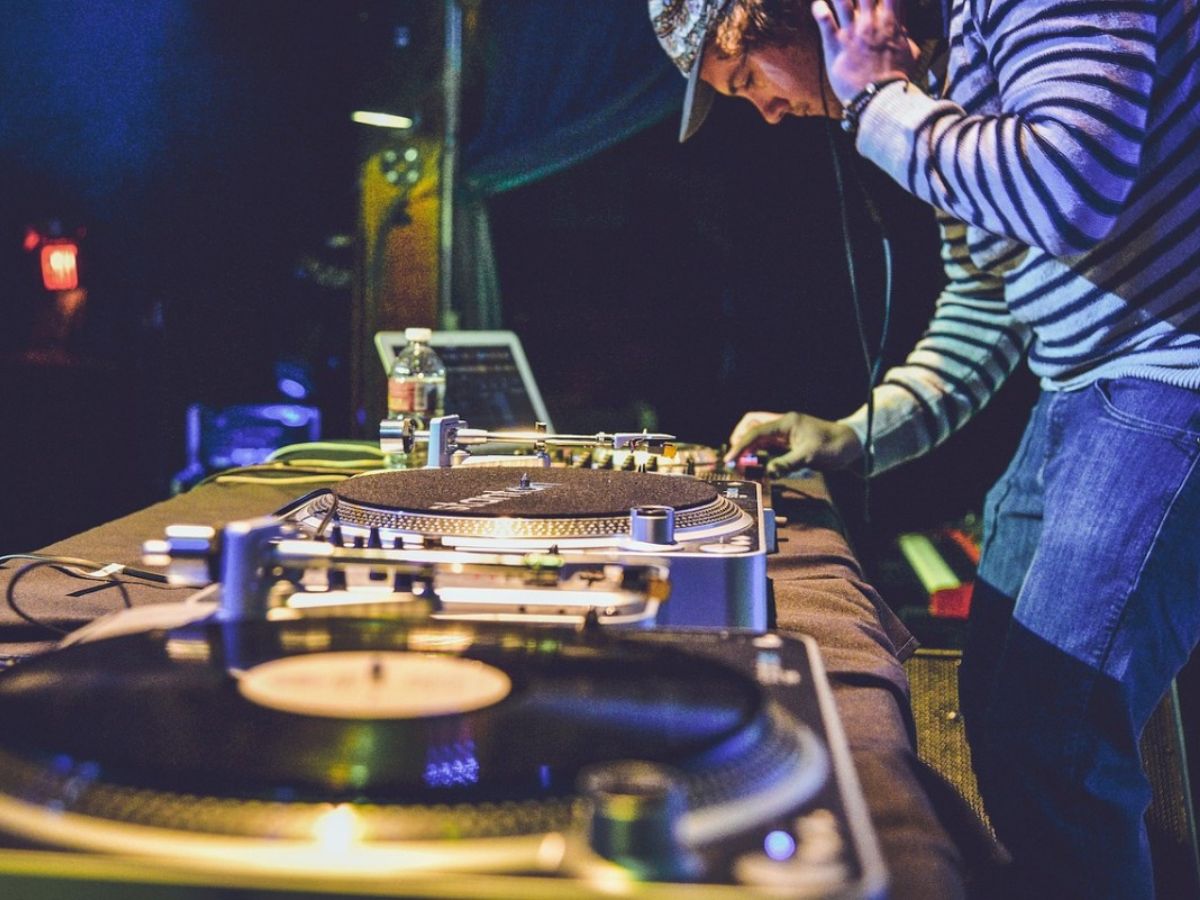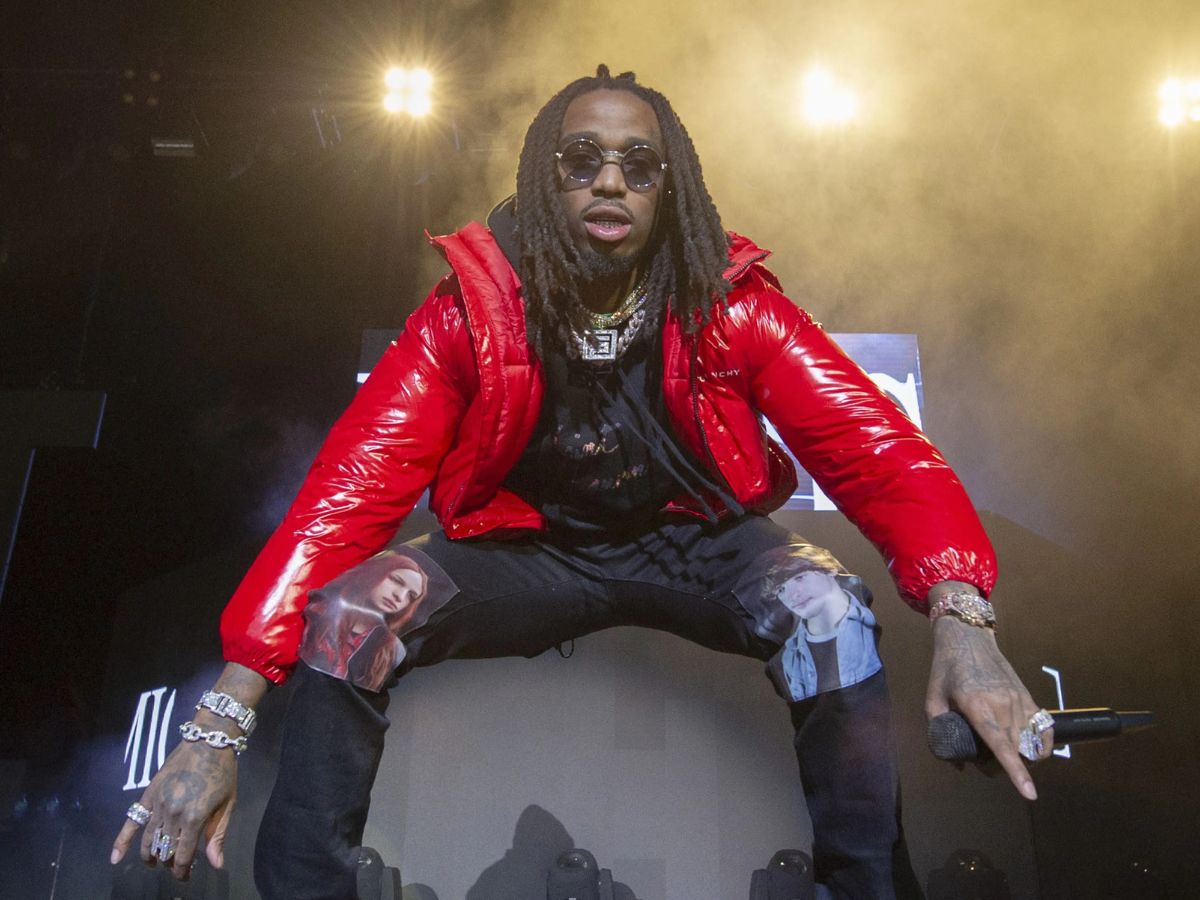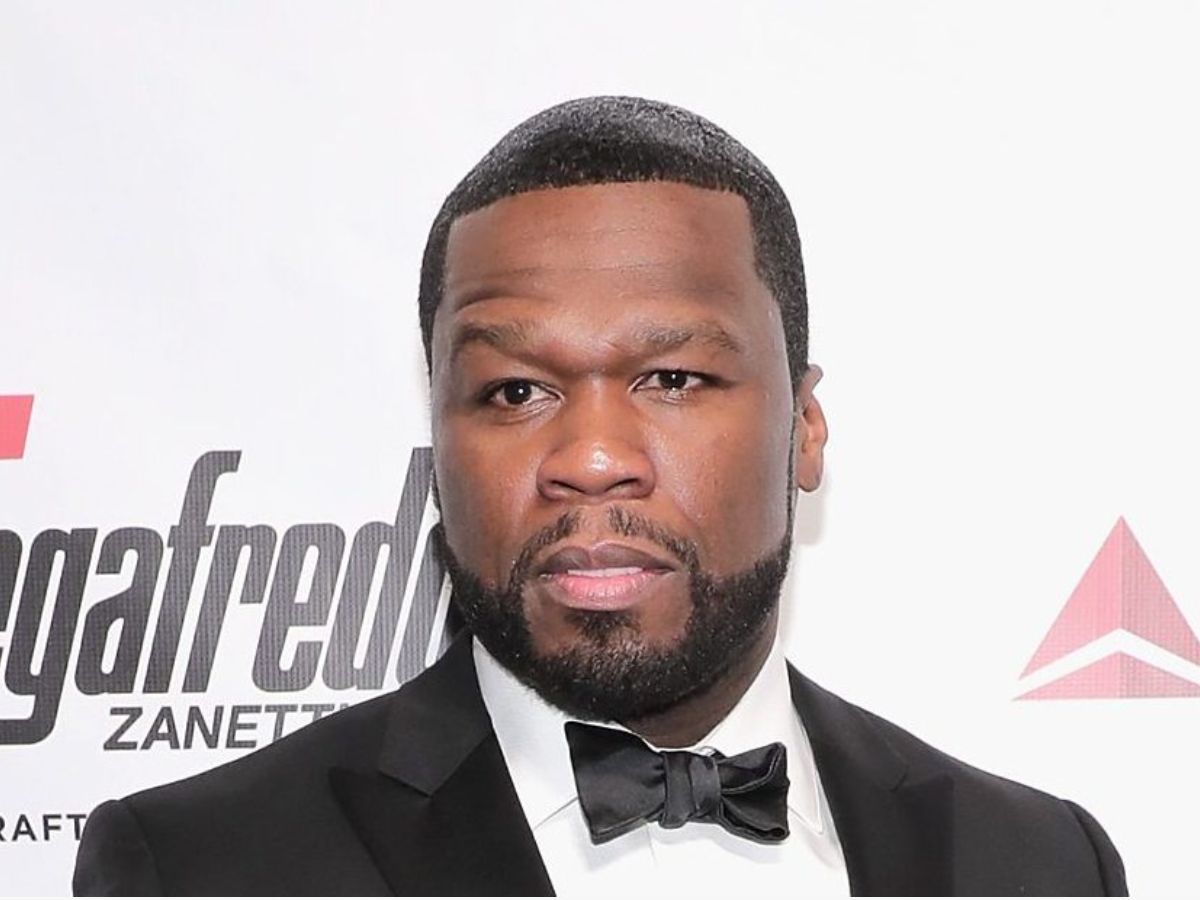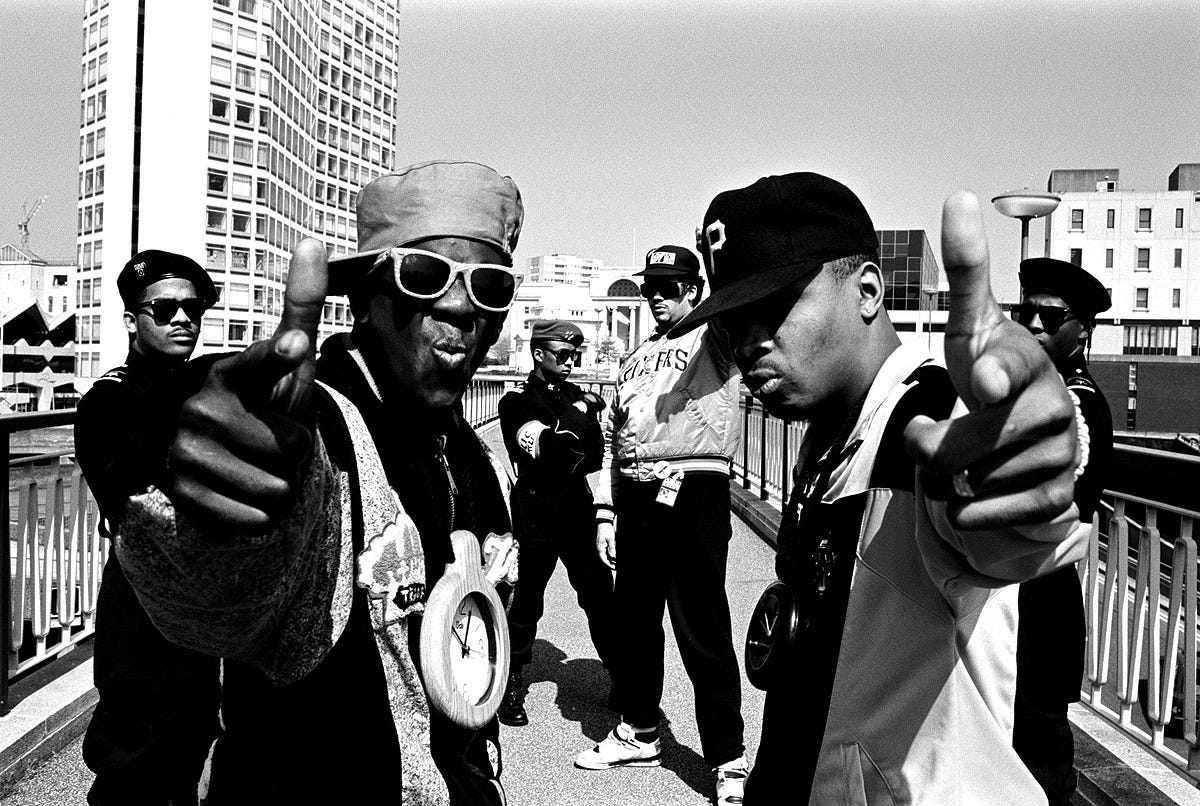

Hip Hop
What Is West Coast Hip Hop
Modified: March 2, 2024
Discover the origins and influence of West Coast Hip Hop, an iconic subgenre within the world of music. Explore its unique sound, notable artists, and cultural impact in this comprehensive guide.
(Many of the links in this article redirect to a specific reviewed product. Your purchase of these products through affiliate links helps to generate commission for AudioLover.com, at no extra cost. Learn more)
Table of Contents
Introduction
West Coast hip hop, also known as Westside hip hop or simply West Coast rap, is one of the most influential and iconic subgenres of hip hop music. Originating in the 1980s, West Coast hip hop has left an indelible mark on the music industry and popular culture as a whole. With its unique sound, distinctive style, and lyrical themes, West Coast hip hop has continued to evolve and thrive over the years.
What sets West Coast hip hop apart from other regional styles is its emphasis on laid-back, funky beats, smooth melodies, and storytelling through lyrics. The West Coast hip hop scene emerged as a direct response to the dominance of East Coast hip hop in the early days of the genre. Artists from cities like Los Angeles, San Francisco, and Oakland sought to create their own distinct sound that reflected the realities of their West Coast lifestyles and experiences.
The iconic popularity of West Coast hip hop can be traced back to the late 1980s and early 1990s, with groundbreaking albums released by artists such as N.W.A., Ice-T, and Dr. Dre. These artists helped define the West Coast sound and paved the way for future generations of rappers to follow.
Over the years, West Coast hip hop has produced a plethora of highly influential and successful artists, including Snoop Dogg, Tupac Shakur, Warren G, Eazy-E, and Kendrick Lamar, just to name a few. Each of these artists brought their own unique style and perspective to the genre, contributing to the rich tapestry that is West Coast hip hop.
In this article, we will delve into the origins of West Coast hip hop, explore its distinctive characteristics, examine the impact it has had on popular culture, discuss controversies and feuds within the scene, and take a look at the current state of West Coast hip hop. So buckle up and get ready to dive deep into the world of West Coast hip hop!
Origins of West Coast Hip Hop
The origins of West Coast hip hop can be traced back to the late 1970s and early 1980s, when the genre was starting to gain traction on the East Coast. As hip hop music spread across the United States, artists on the West Coast began to put their own spin on the genre, incorporating elements of funk, soul, and gang culture into their music.
One of the earliest pioneers of West Coast hip hop was DJ Kool Herc, who is often credited as one of the founding fathers of the genre. Herc’s parties in the Bronx during the 1970s were legendary, and his innovative style of mixing and scratching records inspired a new generation of DJs and MCs.
However, it wasn’t until the 1980s that West Coast hip hop started to develop its own unique identity. In cities like Los Angeles and Oakland, local artists began to experiment with different sounds and styles, paving the way for what would become the West Coast sound.
In Los Angeles, the group World Class Wreckin’ Cru, led by Dr. Dre and DJ Yella, played a crucial role in shaping the early sound of West Coast hip hop. Their fusion of electro-funk and rap laid the foundation for the G-funk sound that would later dominate the West Coast hip hop scene.
Meanwhile, in Oakland, artists like Too Short and E-40 were crafting their own brand of West Coast rap, focusing on gritty street tales and party anthems. Their raw and unapologetic approach to storytelling resonated with audiences and helped solidify the West Coast’s place in the hip hop landscape.
However, it was the emergence of N.W.A. (Niggaz Wit Attitudes) in the late 1980s that truly put West Coast hip hop on the map. Composed of Dr. Dre, Ice Cube, Eazy-E, MC Ren, and DJ Yella, N.W.A. pushed the boundaries of the genre with their controversial lyrics and politically charged songs.
Their seminal album, “Straight Outta Compton,” became a cultural phenomenon, catapulting gangsta rap into the mainstream and sparking important conversations about police brutality and racial inequality. N.W.A. and other West Coast artists during this time laid the groundwork for what would become the dominant sound of West Coast hip hop in the 1990s.
Overall, the origins of West Coast hip hop can be attributed to a blend of East Coast influences, West Coast lifestyle, and the unique experiences of artists who sought to tell their stories through music. With its distinct sound and honest lyricism, West Coast hip hop continues to captivate audiences and leave an indelible mark on the music industry.
Artists and Influences
West Coast hip hop has produced a multitude of talented artists who have not only made significant contributions to the genre but have also influenced the trajectory of hip hop as a whole. These artists have brought unique styles, lyrical prowess, and distinctive perspectives to the table, shaping the West Coast hip hop sound over the years.
One of the most iconic figures in West Coast hip hop is Snoop Dogg. With his laid-back flow, smooth delivery, and unmistakable charisma, Snoop Dogg emerged as a major force in the early 1990s. His debut album, “Doggystyle,” produced by Dr. Dre, became an instant classic and solidified his status as a West Coast hip hop legend. Snoop Dogg’s influence can still be felt in the genre today, as he continues to release new music and collaborate with both up-and-coming and established artists.
Tupac Shakur, often regarded as one of the greatest rappers of all time, is another artist whose impact on West Coast hip hop cannot be overstated. Through his emotionally charged lyrics and powerful delivery, Tupac brought a level of introspection and social commentary to his music that resonated with audiences worldwide. His album “All Eyez on Me” remains a landmark release and a testament to his enduring influence on the genre.
Dr. Dre, both as a solo artist and as a producer, has played a significant role in shaping the West Coast hip hop sound. Known for his pioneering work in G-funk and his meticulous attention to detail in production, Dr. Dre has been instrumental in the success of numerous West Coast artists, including Snoop Dogg, Eminem, and Kendrick Lamar. His groundbreaking album “The Chronic” not only solidified his own career but also served as a blueprint for the West Coast sound for years to come.
Other notable West Coast hip hop artists include Ice Cube, known for his politically charged lyrics and powerful storytelling; Eazy-E, a founding member of N.W.A. and a key figure in the development of gangsta rap; and Kendrick Lamar, who has garnered critical acclaim for his thought-provoking lyrics and boundary-pushing musical style.
While these artists have undoubtedly made their mark on West Coast hip hop, it’s also important to recognize the influence of earlier generations of musicians on the development of the genre. Artists like Parliament-Funkadelic, with their funky and soulful sound, and Rick James, with his infectious grooves, provided the foundation upon which West Coast hip hop was built. Their musical innovation and cultural impact paved the way for the artists who would come to define West Coast hip hop in subsequent years.
Overall, the artists and influences that have emerged from the West Coast hip hop scene have played a vital role in shaping the genre and pushing the boundaries of what hip hop can be. Their creativity, originality, and dedication to their craft have ensured that West Coast hip hop remains a powerhouse in the music industry.
Distinctive Characteristics of West Coast Hip Hop
West Coast hip hop has a distinct sound and style that sets it apart from other regional variations of the genre. From its production techniques to its lyrical themes, West Coast hip hop has several defining characteristics that contribute to its unique identity.
- G-Funk Sound: One of the most prominent characteristics of West Coast hip hop is the G-funk sound. Coined by Dr. Dre, G-funk is characterized by its smooth, melodic, and laid-back production. It often incorporates elements of funk and soul, featuring synthesizers, deep basslines, and an emphasis on creating a chilled-out atmosphere. The G-funk sound became synonymous with West Coast hip hop in the 1990s, thanks to artists like Dr. Dre, Snoop Dogg, and Warren G.
- Lyrical Themes: West Coast hip hop is known for its diverse and often gritty lyrical themes. While some artists focus on partying and celebrating the West Coast lifestyle, others delve into social issues, street life, and personal struggles. The lyrics often reflect the realities of growing up in urban areas, touching on topics such as gang violence, police brutality, and the challenges faced by marginalized communities. This raw and unfiltered storytelling has become a hallmark of West Coast hip hop.
- West Coast Slang and Culture: West Coast hip hop also incorporates regional slang and embraces the culture of the West Coast. Artists frequently incorporate words and phrases unique to the region, giving their music a distinct flavor. The laid-back attitude, the influence of lowriding and car culture, and the West Coast’s sunny and relaxed vibe are all elements that permeate the music and contribute to the overall aesthetic of West Coast hip hop.
- Collaborative Spirit: Another characteristic of West Coast hip hop is its collaborative nature. Artists from the West Coast often work together, forming groups and collectives, and collaborating on songs and albums. This culture of collaboration has produced some unforgettable moments in West Coast hip hop, with artists amplifying each other’s talents and creating a sense of community within the genre.
- Connection to Dance and Party Culture: West Coast hip hop has a close connection to dance and party culture. With its infectious beats and energetic rhythms, West Coast hip hop has inspired a variety of dance styles, including the famous “C-Walk” and various forms of breakdancing. The music’s ability to get people moving and bring the party atmosphere is a testament to its appeal and influence.
These distinctive characteristics contribute to the rich tapestry of West Coast hip hop. They shape the sound, themes, and overall aesthetic of the genre and continue to attract a dedicated and passionate fanbase. West Coast hip hop’s unique combination of style, storytelling, and cultural influence has made it a formidable force in the world of music.
The Role of Gangsta Rap
Gangsta rap, a subgenre of hip hop, played a crucial role in shaping and defining the landscape of West Coast hip hop. Emerging in the late 1980s and early 1990s, gangsta rap provided a platform for artists to express their experiences and shed light on the harsh realities of inner-city life. It was through gangsta rap that West Coast hip hop gained notoriety and became a dominant force in the music industry.
Gangsta rap is characterized by its gritty and often confrontational lyrics, which depict tales of street life, violence, drugs, and social issues. The lyrics paint a vivid and sometimes controversial picture of urban realities, providing a voice for those who felt marginalized and overlooked. West Coast artists, such as N.W.A. with their album “Straight Outta Compton,” Eazy-E, Ice-T, and 2Pac, embraced gangsta rap as a means of expressing their frustrations and shedding light on the social issues plaguing their communities.
One of the primary reasons gangsta rap resonated with audiences was its ability to authentically convey the everyday experiences of those living in underserved neighborhoods. The lyrics reflected the struggles, triumphs, and trials faced by individuals growing up in environments marked by poverty, inequality, and systemic racism. By discussing these hard-hitting topics, gangsta rap became a vehicle for social commentary and a platform for demanding change.
Moreover, gangsta rap challenged societal norms and exposed the harsh realities of police brutality and socioeconomic disparities. Artists fearlessly addressed the relationship between law enforcement and Black communities, shining a spotlight on the injustices they encountered regularly. This confrontational approach sparked controversy and propelled important discussions about institutionalized racism and the need for reform.
At the same time, gangsta rap faced criticism from those who viewed it as glorifying violence and perpetuating negative stereotypes. The genre faced scrutiny for its explicit content and was blamed for promoting criminal behavior. Despite the controversy, many defenders argued that gangsta rap was a reflection of the harsh conditions and struggles faced by marginalized communities and should be seen as a form of artistic expression, providing a voice for the voiceless.
Gangsta rap not only impacted the West Coast music scene but also influenced the wider hip hop industry. It shaped the sound, subject matter, and authenticity of the genre, giving rise to a new wave of artists who sought to convey their truths and experiences. The impact of gangsta rap can still be felt today, as contemporary West Coast hip hop artists continue to tackle social issues and give voice to their communities.
Overall, gangsta rap played a pivotal role in the development and success of West Coast hip hop. It provided a platform for artists to express their experiences, shed light on social issues, and demand change. Despite the controversy surrounding the genre, its impact on hip hop and popular culture cannot be overlooked.
The Impact of West Coast Hip Hop on Popular Culture
West Coast hip hop has had a profound and lasting impact on popular culture, influencing not only the music industry but also fashion, art, and even the way people speak and express themselves. The genre’s unique sound, style, and lyrical themes have made it a cultural force that continues to resonate with audiences around the world.
One of the most significant ways in which West Coast hip hop has influenced popular culture is through its music. The catchy hooks, infectious beats, and memorable lyrics have created countless anthems that have become part of the collective consciousness. From the iconic “California Love” by Tupac Shakur to Dr. Dre’s “Nuthin’ but a ‘G’ Thang,” West Coast hip hop songs have become timeless classics that transcend generations.
Furthermore, West Coast hip hop artists have been trendsetters in fashion and style. From the laid-back attire of Snoop Dogg and his preference for tracksuits and oversized jerseys to the west coast’s iconic gangster-inspired fashion, including bandanas, baggy pants, and lowrider culture, the fashion choices of West Coast hip hop artists have influenced streetwear and mainstream fashion trends.
In addition, West Coast hip hop has had a significant impact on the art world. Artists like Tupac Shakur and Ice Cube used their music and lyrics as a form of storytelling, conveying emotions, struggles, and social commentary. Their ability to paint vivid pictures with words inspired other artists to use their visual medium to reflect the experiences of the hip hop community. From graffiti art to murals and album covers, the art influenced by West Coast hip hop has become a visual representation of the culture and its impact on society.
Beyond music, fashion, and art, West Coast hip hop has also left its mark on the way people communicate. The slang, vocabulary, and expressions used by West Coast artists have become part of everyday language, not just within the hip hop community, but also in mainstream culture. Phrases like “fo shizzle,” “ride or die,” and “west side” have traveled far beyond the streets of Los Angeles, becoming recognized and used worldwide.
Moreover, West Coast hip hop’s influence extends to the film and entertainment industry. From Ice Cube’s transition into acting to the iconic soundtrack of films like “Boyz n the Hood” and “Menace II Society,” West Coast hip hop has provided the backdrop and the voice for films that authentically depict the realities of life in urban communities.
Overall, West Coast hip hop’s impact on popular culture cannot be overstated. Its music, fashion, art, language, and presence in film have all helped shape and define the cultural landscape. West Coast hip hop continues to be celebrated and revered for its contributions to music and beyond, ensuring its lasting legacy in the realm of popular culture.
Controversies and Feuds
Throughout its history, West Coast hip hop has been no stranger to controversies and feuds that have captured the attention of both the music industry and the public. These conflicts, often fueled by artistic rivalries, personal vendettas, or disagreements over creative differences, have shaped the narrative of West Coast hip hop and left a lasting impact on the genre.
One of the most infamous feuds in West Coast hip hop was the highly publicized rivalry between East Coast and West Coast artists, most notably the beef between Tupac Shakur and The Notorious B.I.G. The feud escalated to dangerous levels and ultimately resulted in the tragic deaths of both artists. This feud highlighted the intense rivalry and tensions between the two coasts, which were fueled by media speculation and the perception that both sides were vying for supremacy in the hip hop world.
Another significant feud in West Coast hip hop was the long-standing animosity between Dr. Dre and Eazy-E, former N.W.A. members. Following the breakup of N.W.A., the two musicians engaged in a bitter war of words, with diss tracks and public insults exchanged between them. This feud not only showcased the personal and artistic differences within the group but also highlighted the larger issue of loyalty and betrayal within the music industry.
Furthermore, the rise of gangsta rap in West Coast hip hop brought its fair share of controversies. Some critics argued that the genre glorified violence, misogyny, and criminal activities, leading to calls for censorship and attempts to ban gangsta rap music. Artists such as Ice-T, N.W.A., and Too Short faced criticism for their explicit lyrics and provocative subject matter, but they also defended their art as a reflection of the harsh realities they witnessed in their communities.
Feuds and controversies within the West Coast hip hop scene were not limited to just individual artists. Record label disputes and disputes over financial matters have also caused rifts between artists, leading to protracted legal battles and fractured relationships. These conflicts have sometimes hindered the progress and collaborations within the scene, with artists taking sides and causing divisions within the West Coast hip hop community.
It is worth noting that amid the controversies and feuds, there have also been instances of resolution and reconciliation. Some feuds have been put to rest through mediation, apologies, or a mutual understanding of the importance of unity within the hip hop community. Artists have come together to collaborate and bridge the gaps that once divided them, demonstrating the power of music to heal and unite.
Despite the controversies and feuds that have marked its history, West Coast hip hop continues to evolve and thrive. The conflicts, while divisive at times, have also sparked important conversations about artistic expression, social issues, and the commercialization of the music industry. They serve as a reminder of the passion, intensity, and complexity that exist within the world of West Coast hip hop.
Evolution of West Coast Hip Hop
West Coast hip hop has undergone a continuous evolution since its inception, adapting to new musical trends, societal changes, and shifting cultural landscapes. From its early days as a response to East Coast dominance to its present-day fusion of different styles, the genre has consistently pushed boundaries and redefined itself.
In the 1980s, West Coast hip hop emerged as a distinct subgenre, with artists like N.W.A., Dr. Dre, and Ice-T leading the charge. This era laid the foundation for the West Coast sound, characterized by its heavy use of funk samples, smooth melodies, and socially conscious lyrics. The raw and unfiltered storytelling of gangsta rap became a defining element, putting the West Coast on the map of hip hop.
As the 1990s arrived, West Coast hip hop experienced a significant shift with the rise of G-funk, popularized by Dr. Dre and Snoop Dogg. Infusing gangsta rap with a melodic and laid-back sound, G-funk became a dominant force in the music scene. The genre reached new heights of popularity, with artists like Warren G, Nate Dogg, and Tha Dogg Pound contributing to its success.
The late 1990s and early 2000s brought a diversification of styles within West Coast hip hop. Artists like The Game and Kendrick Lamar emerged, bringing their unique storytelling abilities and introspective lyrics to the forefront. This period also saw the rise of hyphy, a subgenre characterized by its energetic and upbeat sound, coming out of the Bay Area with artists like E-40 and Too Short.
During the early 2000s, West Coast hip hop faced challenges as other regional styles gained prominence. However, artists like Kendrick Lamar and Tyler, The Creator revitalized the scene, bringing a new wave of creativity and talent. Kendrick Lamar’s introspective and socially conscious lyrics resonated with audiences, earning him critical acclaim and commercial success.
Another notable evolution in West Coast hip hop came with the emergence of the “SoundCloud rap” movement in the mid-2010s. Artists like YG and Saweetie blended West Coast influences with modern trap and melodic rap, creating a fresh and innovative sound that resonated with a new generation of listeners. This fusion of styles showcased the adaptability and willingness to experiment within the West Coast hip hop scene.
Today, West Coast hip hop continues to evolve and push boundaries. Artists are exploring different genres, collaborating with artists from diverse backgrounds, and incorporating new sounds and production techniques into their music. The West Coast remains a hotbed of talent, with artists like Anderson .Paak, Schoolboy Q, and Roddy Ricch representing the new wave of West Coast hip hop.
Overall, the evolution of West Coast hip hop has been marked by a willingness to embrace change, experiment with different styles, and adapt to the ever-evolving music industry. The genre’s ability to stay relevant and innovative speaks to its enduring influence on the global hip hop landscape.
Current State of West Coast Hip Hop
The current state of West Coast hip hop is vibrant and diverse, with a new generation of artists pushing the boundaries and carrying on the legacy of the genre. While still influenced by the classic West Coast sound, artists are incorporating a wide range of influences, experimenting with different styles, and redefining what it means to be a West Coast rapper.
One of the prominent figures in the current West Coast hip hop scene is Kendrick Lamar. With his critically acclaimed albums like “good kid, m.A.A.d city” and “To Pimp a Butterfly,” Lamar has become a leading voice in the genre. His introspective and socially conscious lyrics, poetic storytelling, and willingness to experiment with different musical styles have set him apart and cemented his status as one of the greatest rappers of his generation.
Another artist who has made a significant impact in recent years is Anderson .Paak. Known for his soulful vocals, infectious energy, and eclectic musical style, .Paak seamlessly blends elements of hip hop, R&B, funk, and soul. His fusion of different genres and energetic live performances have garnered him a devoted following and critical acclaim, solidifying his place in the West Coast hip hop landscape.
The West Coast hip hop scene has also seen a surge of emerging talent, with artists like Roddy Ricch, Blueface, and Saweetie making waves in the industry. Roddy Ricch’s melodic rap and introspective lyrics have earned him numerous accolades and commercial success, while Blueface’s offbeat flow and charismatic personality have garnered attention and controversy. Saweetie’s confident and catchy tracks have catapulted her into the mainstream, showcasing the diversity and range within the West Coast hip hop scene.
In addition, West Coast hip hop continues to foster collaborations and unity within the genre. Artists are coming together, both from the West Coast and beyond, to create music that transcends regional boundaries. Collaborations like “Sicko Mode” by Travis Scott featuring Drake and “King’s Dead” by Jay Rock featuring Kendrick Lamar and Future showcase the ability of West Coast artists to collaborate with artists from different regions, resulting in chart-topping hits.
Moreover, there has been a resurgence of interest in older West Coast hip hop icons. Artists like Nipsey Hussle, who tragically passed away in 2019, continue to inspire and leave a lasting impact on the scene. Nipsey’s dedication to his community, entrepreneurial spirit, and commitment to social change have made him an influential figure, both within and outside of the music industry.
The current state of West Coast hip hop is a blend of traditional elements and new innovations, representing a dynamic and evolving genre. As artists continue to push boundaries, experiment with different sounds, and address pressing societal issues, West Coast hip hop remains an influential force in shaping the music industry and the cultural landscape.
Conclusion
West Coast hip hop has undoubtedly been a driving force in the evolution of the genre, leaving an indelible mark on both the music industry and popular culture. From its beginnings as a response to East Coast dominance to its present-day vibrant and diverse scene, West Coast hip hop has continually pushed boundaries, redefined soundscapes, and brought marginalized voices to the forefront.
With its distinctive G-funk sound, raw storytelling, and socially conscious lyrics, West Coast hip hop has captured the hearts and minds of listeners worldwide. Artists like Snoop Dogg, Tupac Shakur, Dr. Dre, and Kendrick Lamar have become household names, showcasing the immense talent and creativity within the West Coast hip hop scene.
The genre’s impact extends far beyond the music itself. West Coast hip hop has influenced fashion, art, and how people communicate, with its slang and expressions becoming part of everyday language. It has also sparked important conversations about social issues, police brutality, and inequality, using music as a catalyst for change and a platform for underrepresented voices.
Throughout its history, West Coast hip hop has faced controversies, feuds, and challenges, but it has also shown resilience, unity, and the ability to adapt and evolve. The genre continues to produce groundbreaking artists who defy expectations, blend genres, and push the boundaries of what hip hop can be.
As we look to the future, the current state of West Coast hip hop is one of diversity, creativity, and continued growth. Emerging talent and established artists alike are pushing the genre even further, collaborating across regional divides and experimenting with new sounds and styles.
West Coast hip hop remains a vital and thriving force in the music industry, shaping the cultural landscape and inspiring future generations of artists. Its influence can be felt not only in the music of today but in the way we dress, talk, and view the world around us.
In conclusion, West Coast hip hop stands as a testament to the power of music to reflect and inspire change. Its unique sound, storytelling capabilities, and cultural impact have solidified its place in the annals of hip hop history, ensuring that the West Coast will continue to influence and shape the genre for years to come.



